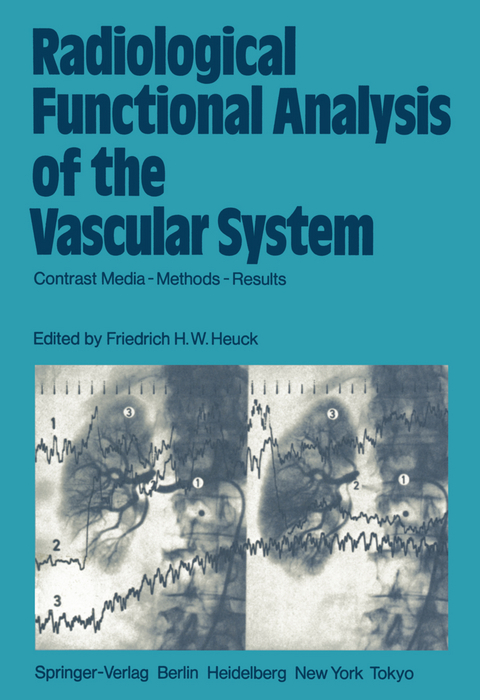
Radiological Functional Analysis of the Vascular System
Springer Berlin (Verlag)
9783642689598 (ISBN)
Welcoming Address.- I. Physiology.- Physiological Aspects Concerning the Diagnostic Analysis of Circulatory Dynamics.- II. Pharmacology of Contrast Media.- Contrast Media for Cardiovascular Analysis.- The Pharmacological Effect of Contrast Media on Renal Circulation Measured by Means of Angiodensitometry.- III. Technique of Injection.- Technique for Injection of Contrast Medium.- Model Experiments for Angiocinedensitometry.- IV. Physical and Technical Basics for the Radiological Analysis of Circulation.- Problems of Choice of Reference System for Quantitative Radiological Circulation Analysis.- Information Content of Cinedensitometric Blood Flow Measurements.- Problems of Different Methods of Radiographic Absorptiometry of Circulation.- Digital Videodensitometry: Some Approaches to Radiographic Image Restoration and Analysis.- Flow Measurements by Videodensitometry.- Influence of Time Resolution in Cine and Video Cardangiography.- Automated Digital Image Processing for Hemodynamic Investigations.- Application Fields of Computer Angiography.- Demonstration of Dopamine Effect in Dog Kidneys by Computer Angiography.- V. Clinical Applications and Results.- Roentgen Cinedensitometry of Blood Circulation.- Arterial Blood Flow.- Coronary Flow Measurements Using Cinedensitometry.- Survey of Techniques for Measuring Myocardial Microperfusion.- Densitometric Analysis of Cerebral Blood Flow.- Angiocinedensitometry of Renal Blood Circulation by ECG Controlled Injection.- Results of Blood Flow Measurements.- Cinedensitometric Examinations of the Human Abdominal Aorta.- Cinedensitometric Measurement of Flow in the Femoral and Iliac Arteries During Angioplasty.- Venous Blood Flow.- Determination of Portal and Arterial Liver Hemodynamics by Angiodensitometry.- Videodensitometric Measurement of Venous Return from the Lower Limb.- Stenoses.- Computer Aided Densitometric Evaluation of Coronary Cineangiograms.- Quantification of Coronary Stenoses.- VI. Angiographic Studies by Image Subtraction.- Systems for Digital Diagnosis of Vessels.- Analysis of the Circulatory System Using Intravenous Contrast Medium Injections.- Importance of Contrast Agent Bolus in Intravenous Subtraction Angiography.- Analytical Function Studies Using Digital Intravenous Angiography as a Method for Quantitative Analysis of the Circulation.- Functional Possibilities with the Digital Vascular Imaging System.- Digital Subtraction Angiography as a Control Procedure After Surgery and Percutaneous Transluminal Angioplasty.- VII. Dynamic Studies by Computed Tomography.- Bolus Geometry and Dynamics After Intravenous Injection of Contrast Media.- The Chronogram - Principle and First Results.- Renal Perfusion Studies by Means of CT.- Dynamic Computed Tomography in Abdominal Tumors: New Aspects for Differential Diagnosis.
| Erscheint lt. Verlag | 2.1.2012 |
|---|---|
| Zusatzinfo | XIV, 298 p. |
| Verlagsort | Berlin |
| Sprache | englisch |
| Maße | 170 x 244 mm |
| Gewicht | 547 g |
| Themenwelt | Mathematik / Informatik ► Mathematik ► Analysis |
| Medizinische Fachgebiete ► Innere Medizin ► Hämatologie | |
| Medizinische Fachgebiete ► Radiologie / Bildgebende Verfahren ► Radiologie | |
| Schlagworte | Angiographie • Blood • Computer • Diagnosis • Diagnostics • Durchblutungsmessung • Functional Analysis • Radiology • Tomography |
| ISBN-13 | 9783642689598 / 9783642689598 |
| Zustand | Neuware |
| Informationen gemäß Produktsicherheitsverordnung (GPSR) | |
| Haben Sie eine Frage zum Produkt? |
aus dem Bereich


